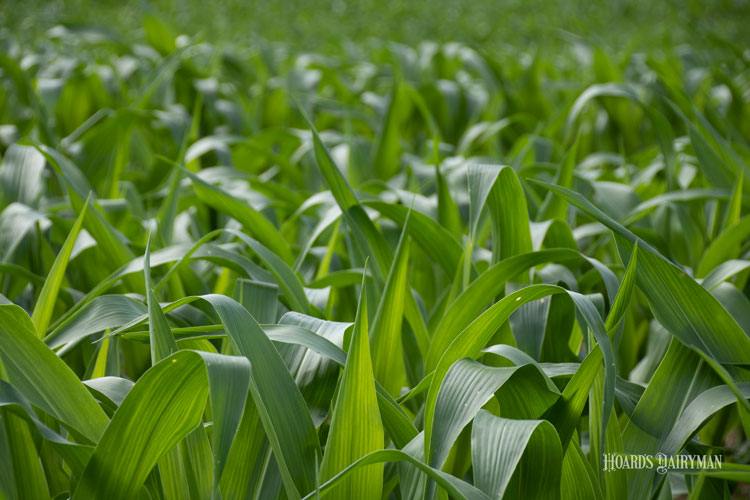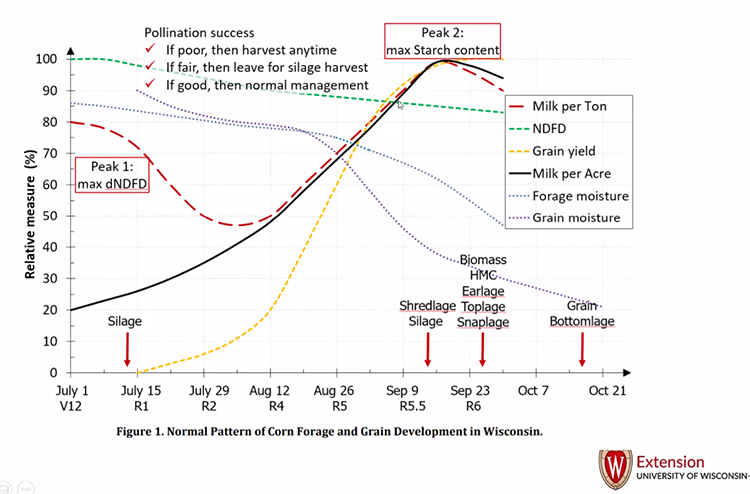
“With every bite they take . . . every mouthful, there’s good quality forage going into that animal for good animal performance,” said Jerry Clark during the Focus on Forage webinar “Managing for High Quality Corn Silage.” That’s why it’s paramount to get the most from your corn silage.
Farmers growing corn silage can focus on these 10 main management practices to maximize the potential found in corn silage:
- Hybrid selection
- Harvest timing
- Trade-off between yield and quality
- Early planting date
- Increased planting population
- Pest management
- Adequate soil fertility
- Crop rotation
- Height and length of cut
- Storage management
That’s according to Clark, an extension agent for the University of Wisconsin-Madison.
The hybrid selection category goes a bit deeper as yield, forage quality, moisture, and pest resistance all need to be examined.
Harvest timing is important due to the chance of reduced yield, whether it’s too wet or too dry.
“If the timing is missed, it’s all for nothing . . . and the feed isn’t the highest quality,” Clark said.
It’s a compromise
Trade-offs between yield and quality exist, since moisture drops the later in the season, which leads to storage problems.
“That’s where you need to make that call of what your goal is — and be aware these things happen quite rapidly as your corn silage matures,” he said.
Focusing on the seedbed date, instead of the temperature, helps with deciding on a planting date. Going too early can cause seedling disease because of late-spring frost. Timing also affects pest control, since controlling weeds early on helps with yield. Clark stressed that since insects are adapting, good scouting is also important.
Soil testing for fertility helps farmers control input costs, especially if they’re able to use their own farm’s manure.
As farmers harvest and experiment with cut height, “It kind of makes sense if we’re cutting higher . . . milk per ton does go up. If we cut it shorter . . . we’re seeing quality drop a little more as we’re taking that stalk into the forage,” he said.
No matter the quality of what farmers have harvested, filling fast, packing well, and covering it quickly makes a big difference.
“We can’t control the weather . . . and that’s always going to drive what we’re doing as far as planting and management throughout the summer months or the growing season,” said Clark.
He referred to a week in April 2019 that demonstrated weather from all seasons in seven days, and said, “It’s kind of humorous . . . trying to farm through a situation like this, even though you can do all these management strategies . . . and manage to the best of your abilities, the weather is always going to be the trump card.”









